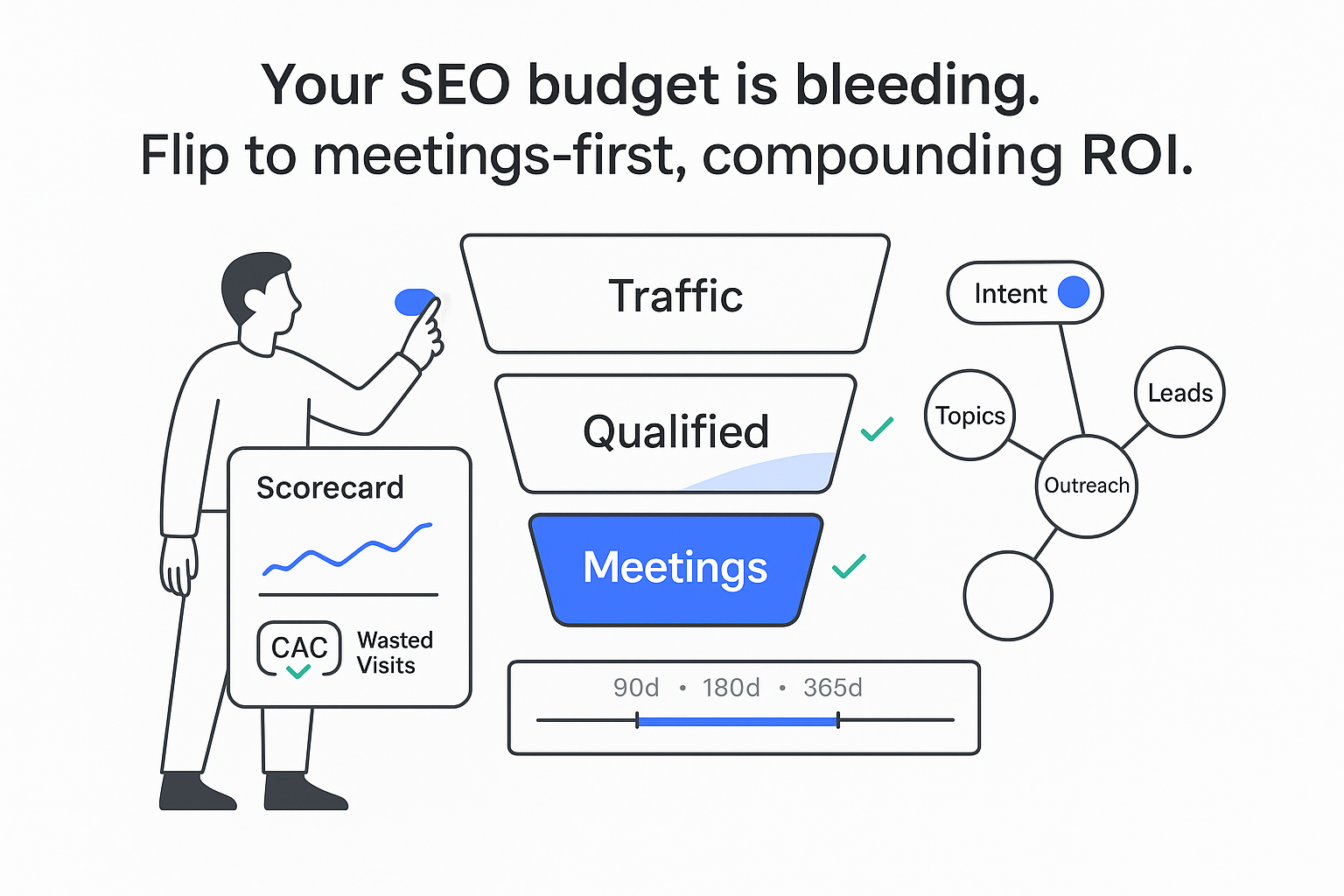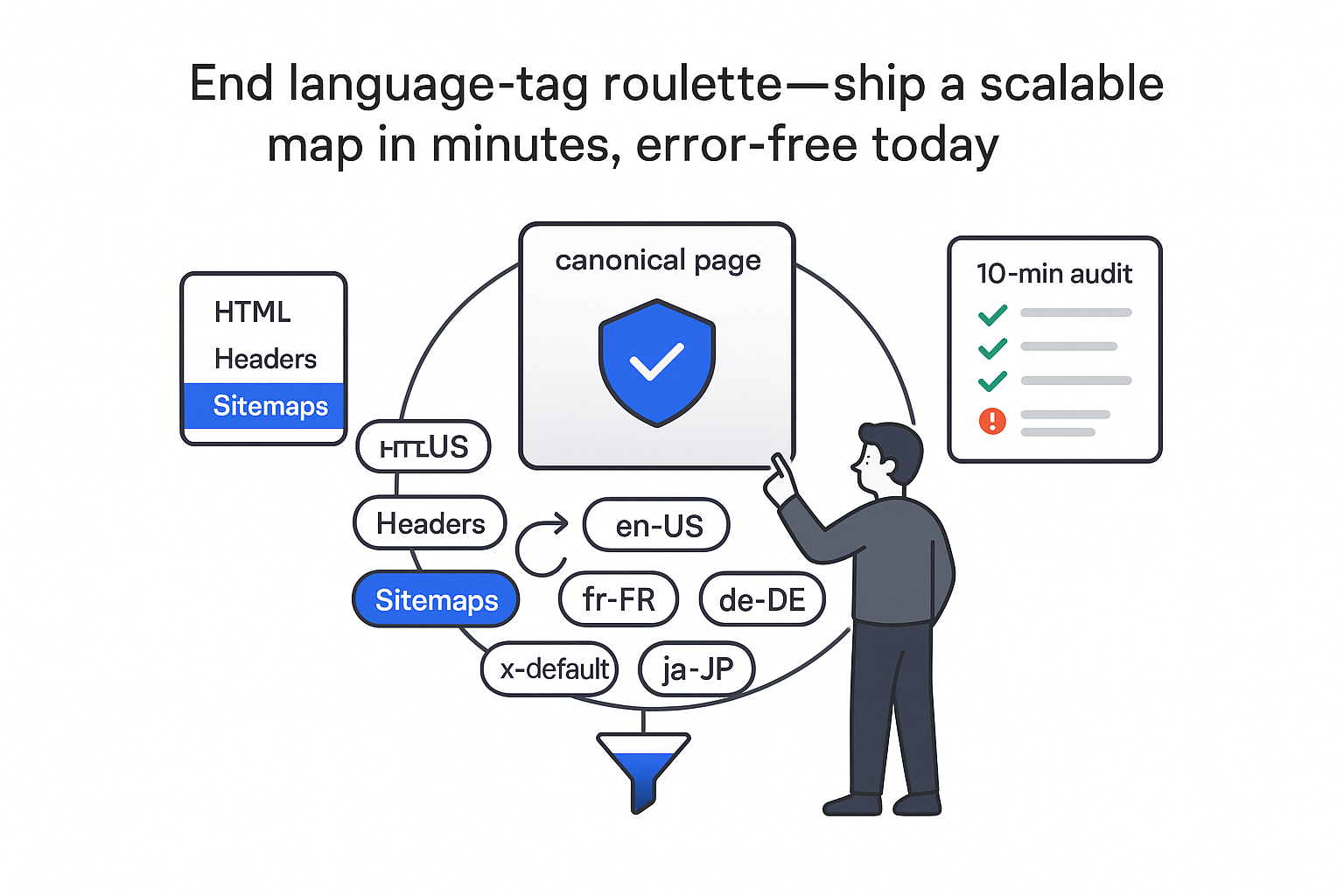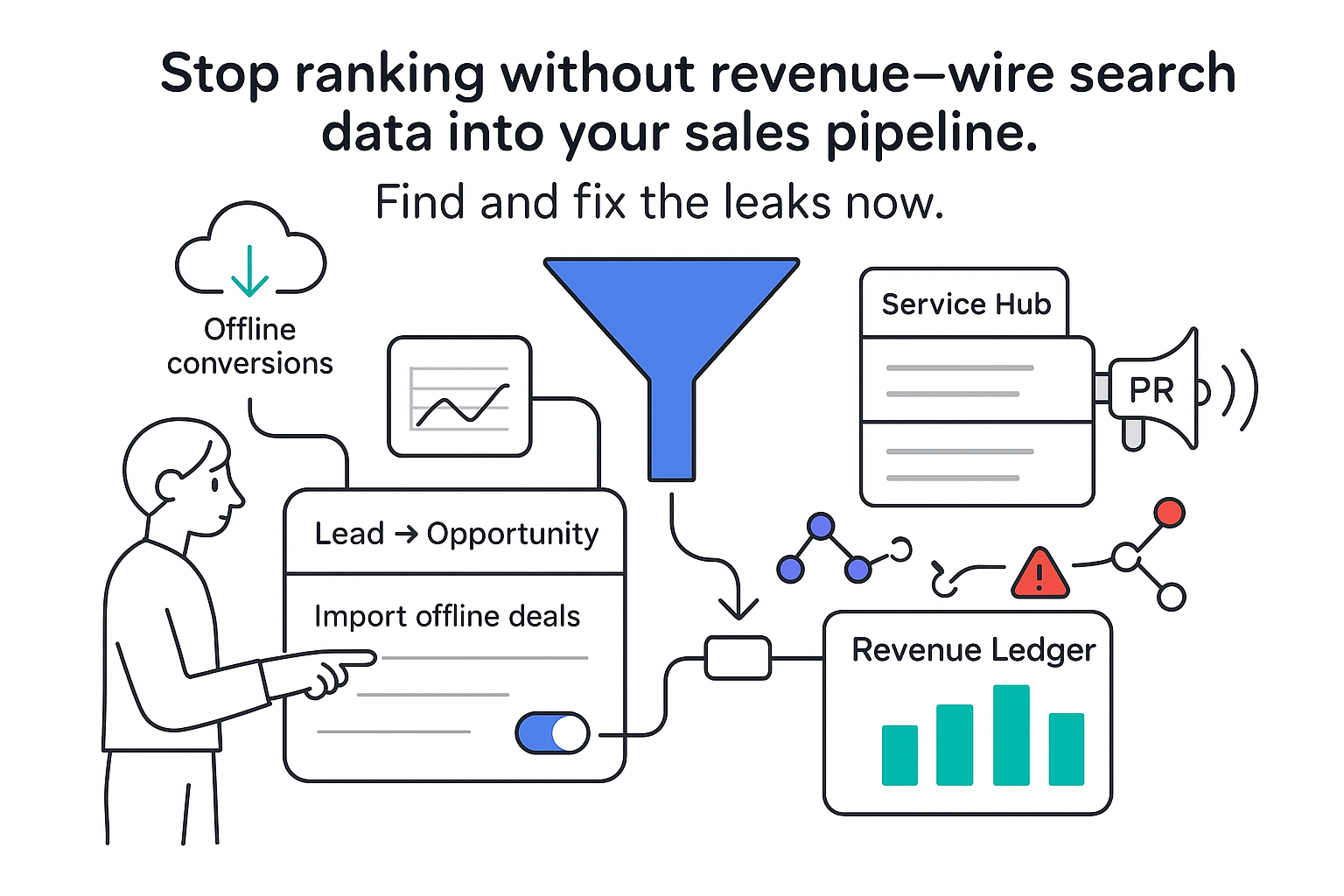Organic growth for a B2B service company should feel predictable, not mystical. When I build the right SEO and demand generation system, traffic turns into qualified conversations, customer acquisition cost (CAC) drops, and the pipeline compounds month over month. No fluff - just numbers I can track. For context on how demand works alongside SEO, see demand generation.
How I judge B2B SEO ROI
I focus on two outcomes: more qualified pipeline and a lower CAC. The math is straightforward: ROI equals revenue from organic minus SEO cost, divided by SEO cost. In earlier stages, I substitute qualified pipeline for revenue to see trend lines faster. Assumptions matter here - results depend on technical health, publishing cadence, domain strength, and sales follow-up. That is why I pair ROI with leading indicators like ranking movement and meeting volume.
Benchmark timeline I plan against:
- 0 to 90 days: technical fixes, high-intent pages live, early ranking movement, and first meetings from brand search and content refreshes
- 6 to 12 months: stable rankings across clusters, compounding non-brand traffic, and sales-qualified pipeline outpacing paid
As one anonymized data point, a B2B consulting firm lifted non-brand organic sessions by 82 percent in 120 days after publishing four decision-stage pages and two comparison pages. Pipeline from organic rose 41 percent with a steady 24 percent meeting rate. Traffic was nice; pipeline paid the bills.
Lead definitions and funnel alignment
Before scaling, I align definitions with sales so reporting stays clean:
- MQL: a fit account or contact that matches ICP filters and shows meaningful on-site or content engagement
- SQL: sales has reviewed the contact, confirmed pain and authority, and booked a conversation
- Opportunity: a documented project scope with a budget signal and timeline, linked to an account and buying committee
From there, I map the funnel from Awareness to Consideration to Decision to Expansion and assign content, outreach, and follow-ups to each step. Clear handoffs prevent “leads” that stall because no one agreed on what qualified means or what the next step should be.
Turning intent into meetings: outreach, content, and conversational search
Personalized outreach works best when it sits on top of search intent. I use CRM and intent signals to spot active pain, then send a short, contextual note that points to a page built for that account or segment. That page uses the segment’s language, showcases relevant proof, and can earn rankings over time for the segment phrase. Each week, I refresh my ICP filters, refine a pain hypothesis from sales notes, match the best asset (calculator, case story, or benchmark), write a 70-120 word opener that shows context in the first line, and run a short multi-channel follow-up cadence. The only metrics that matter here are reply rate and meeting rate.
For content marketing, I prioritize assets that help decisions and prove outcomes. ROI calculators and pricing explainers reduce friction; benchmark summaries frame where a prospect sits relative to peers; short explainers embedded next to decision pages clarify how a service actually works. I cluster topics around high-intent keywords and build internal links from awareness posts to comparison pages, then to calculators or case stories. I strengthen E-E-A-T with clear author bios, citations, and last updated dates. I track meetings or consultation requests per asset rather than downloads, because intent is the signal that correlates with revenue.
Conversational search matters because buyers ask natural questions. I pull long-tail phrasing from sales calls and chat logs, then place a 40-60 word, plain-language answer near the top of the page. I add FAQ or HowTo schema where relevant and aim for featured snippets by answering directly and concisely. Support pages that consistently earn visibility include “how much” pricing explainers, “best” roundups grounded in transparent criteria, and “versus” pages that compare approaches based on fit rather than hype.
Social proof and owned media: social selling, podcasting, and video
A consistent LinkedIn rhythm turns into quiet demand when I tie it back to search topics and on-site conversion paths. Early in the week, I post a 120-180 word point of view on a common mistake. Midweek, I share a short case story carousel that highlights the problem, plan, and proof. At week’s end, I publish a 30-60 second video answering a real sales question. I let posts earn reach before linking to a conversion page, then attribute meetings in the CRM so I can separate noise (likes) from signal (conversations). For more tactics, see Social selling.
A podcast can warm up future clients while feeding SEO. I invite potential partners or buyers as guests, publish transcripts and show notes that target the terms discussed, and cluster topics as patterns emerge. Over time, episode pages rank for specific questions buyers ask. The lagging indicator I watch is meetings sourced from guests and listeners combined; it captures both the relationship effect and the content effect.
Video shortens the distance to trust. I focus on three formats: case story videos that follow problem, plan, proof, and next step; sub-two-minute explainers with helpful screen capture; and short clips that answer a single narrow question. I optimize titles and descriptions for the phrases people actually search, add VideoObject schema, and embed videos on high-intent pages like pricing, comparisons, and industry solutions to lift view-to-meeting conversion rates.
Conversion paths that do not leak
Traffic without clear next steps bleeds. I map every page to a primary next step and a soft next step. A pricing page might point to a calculator as the soft step; a blog post might point to a benchmark or template. Forms stay short. Sticky prompts and gentle exit messages should help, not nag. I also add a simple chat playbook to high-intent pages so visitors can get quick answers or book time without hunting. For practical page elements that improve conversions, review guidance on lead generation landing pages.
A path that often performs looks like this: comparison page to calculator to case story to a conversation with sales. I instrument the path with UTM parameters, on-page events, and CRM campaign tags so I can spot drop-off and fix it.
A quarterly plan without chaos
Quarter one is about foundations and fast wins. I fix crawl, indexing, and speed issues and publish or refresh high-intent pages - pricing, industry solutions, comparisons, and “how much” explainers. I also set up measurement so I can attribute meetings and pipeline accurately.
Quarter two focuses on depth and relevance. I build topic clusters around primary services, using sales-call questions to shape subpages, and launch segment pages that double as SEO landing zones for account-based efforts. Internal linking connects the cluster in a way that helps users and strengthens topical authority. If you are exploring ABM, this is a useful primer: Marketing myth debunked: account-based marketing is not just for enterprise.
Quarter three belongs to conversion experiments. I test form fields, microcopy, and layouts on decision pages. I add calculators, templates, and short videos to bottom-of-funnel pages and tighten routing rules so high-intent leads reach the right person fast.
Quarter four scales what worked. I standardize briefs, outlines, and QA so quality holds as volume increases. I add schema where it helps, refresh top performers with new data, and expand into supporting channels like short video and episodic content that reinforce the same search-driven topics.
Scorecard and governance
I review a simple scorecard weekly so I stay honest about what is working:
- Rankings for target clusters (not vanity terms)
- Organic meetings and qualified pipeline created
- Win rate for organic-sourced deals
- CAC by channel, with trend lines
Governance keeps this steady. I assign clear owners for content, technical SEO, and analytics; set SLAs for updates and fixes; hold a weekly review of rankings, meetings, and pipeline; and run a monthly retro on what moved revenue. If I keep one internal-link project on my list, it is a service overview hub that connects all core clusters and segment pages in one clean path.
Closing thought
By putting ROI first, shaping content around real decisions, and wiring clean conversion paths, I give sales an organic channel that actually performs. It is not magic. It is consistent work, measured weekly, with the right pieces in the right order. When it starts compounding, the calendar fills and CAC falls - and that is when organic growth stops feeling mystical and starts feeling predictable.







.svg)